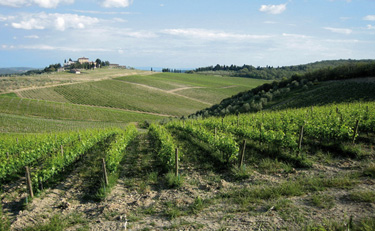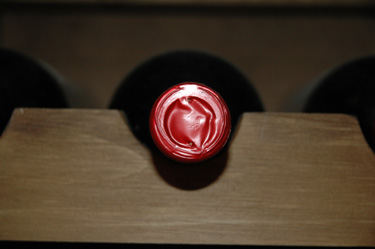Four Wines from Tuscany
Wine is a delicacy enjoyed by many around the world, and a smart restaurant owner is one who stocks some good wine for their customers to enjoy.
Wine is a delicacy enjoyed by many around the world, and a smart restaurant owner is one who stocks some good wine for their customers to enjoy. Matt is a wine lover who writes for Thrifty Tuscany, where you can find Tuscany bed and breakfasts and Tuscany apartments by owner for vineyard tours and wine-tour holidays. He’s been kind enough to write us an article to help restaurant owners become familiar with some of the finer wines from Tuscany. Enjoy!

Four Famous Tuscan Wines
Tuscany is one of the foremost wine-producing regions in Italy. Many of its wines have won prestigious international prizes, while others are very famous in the world for their amiability and great food pairing qualities.
The following is an insight into four famous Tuscan wines which can be counted among the pillars of the contemporary regional production. They will be described here to give you a better understanding on their organoleptic qualities and food pairing characteristics. Although available worldwide, the advice is to taste them in their land of production, perhaps while relaxing in one of the many Tuscany villas available for vacation rental.
Chianti Classico
The Chianti region is vast, but the Chianti Classico area, the original one established in the middle ages, is restricted to a portion of the provinces of Siena and Florence, in the heart of Tuscany. Chianti is among the most renown and prestigious red wines in the world. Its denomination is DOCG (Certified and Guaranteed Denomination of Origin). It must be composed of at least 80% San Giovese, 6% Trebbiano or Malvasia, and the remainder could be either Canaiolo, Cabernet or Merlot grapes. The terroir of Chianti is very carsic and ferrous, resulting in a full-bodied and dry wine. It must be bottled in glass beaujolais bottles or in the classic Tuscan straw flask. The color of Chianti Classico is limpid, of a vivid ruby-red, tending to grenade red with aging. The smell reminds one of violets, getting more refined during the aging process. The taste is harmonious, dry, and lightly tannic, becoming more rounded and smooth with time. The "Riserva" version must be aged for at least 2 years.
Chianti Classico is best paired with grilled and roasted red or fatty meats, aged cheese, legume and cereal soups.
Brunello
A relatively recent star-system wine, it is produced only on the quite small area surrounding Montalcino in Tuscany. It abides to strict denomination rules, including specific chemical composition of the terroir and alcohol content, and also boasts the DOCG label. Brunello di Montalcino is entirely composed of San Giovese grapes. This dark variety is the reason of the wine's name, since dark-colored in Italian is "bruno". Brunello is a very complex wine, full-bodied, fruited and flowery. Its color is ruby-red intense with deep grenade hues, assuming nuances of bordeaux after aging. The intense and characteristic smell of Brunello is wide and elegant, yet powerful due to its alcohol amount. Its full-bodied and tannic taste is dry, warm and well balanced, with a characteristic vanilla and spice scent.
At the table Brunello finds a perfect match with pheasant game, and rich cheeses such as Pecorino of Pienza, Grana Padano and Parmigiano Reggiano.
Nobile di Montepulciano

Wine production started in Montepulciano during Etruscan times, reaching a high quality level around the year 1000. Nobile di Montepulciano started its path to fame in 1980, when the DOCG recognition was attributed to it. The composition of Nobile is 70% San Giovese, locally known as Prugnolo Gentile. The remainder 20% may be taken by one or more of the following: Malvasia del Chianti, Canaiolo Nero, or other grapes authorized in the Siena province. The territory of production is quite small, therefore the production is limited, making of Nobile a very high quality wine that must undergo an aging period of two years, three for the "Riserva". The color of Nobile is ruby-red, tending to grenade red after aging. It has an intense fruity and slightly nutty scent, while the taste is dry and balanced, with a persistent scent of wood.
Nobile di Montepulciano should be paired with roasted and fatty meats and pheasant game.
Sassicaia
The story of Sassicaia starts in Bolgheri, by the hand of Marquis Mario Incisa della Rocchetta, during the 1940s. Born just for family consumption, in 1968 it was commercialized immediately winning international prizes. The production is extremely limited and the quality is excellent, making of it one of the most pricey Tuscan wines. It is composed of 85% Cabernet Sauvignon and 15% Cabernet Franc that grow only in the Livorno Maremma area. The rocky and arid terroir gives the name to this wine, since a "sassicaia" is a stone and pebble area. The color of Sassicaia is ruby-red, intense and tending to grenade red during the slow aging process. The scent is rich, elegant and majestic, while the taste is dry, full-bodied, harmonious and structured, with a frail scent of nectarine.
Sassicaia should be paired with intense tastes such as roasted pigeon and game, bordeaux fillet-mignon, and aged cheese. A walnut and raw fresh Porcini salad seasoned with aromatic herbs and olive oil is also an excellent match for Sassicaia.



